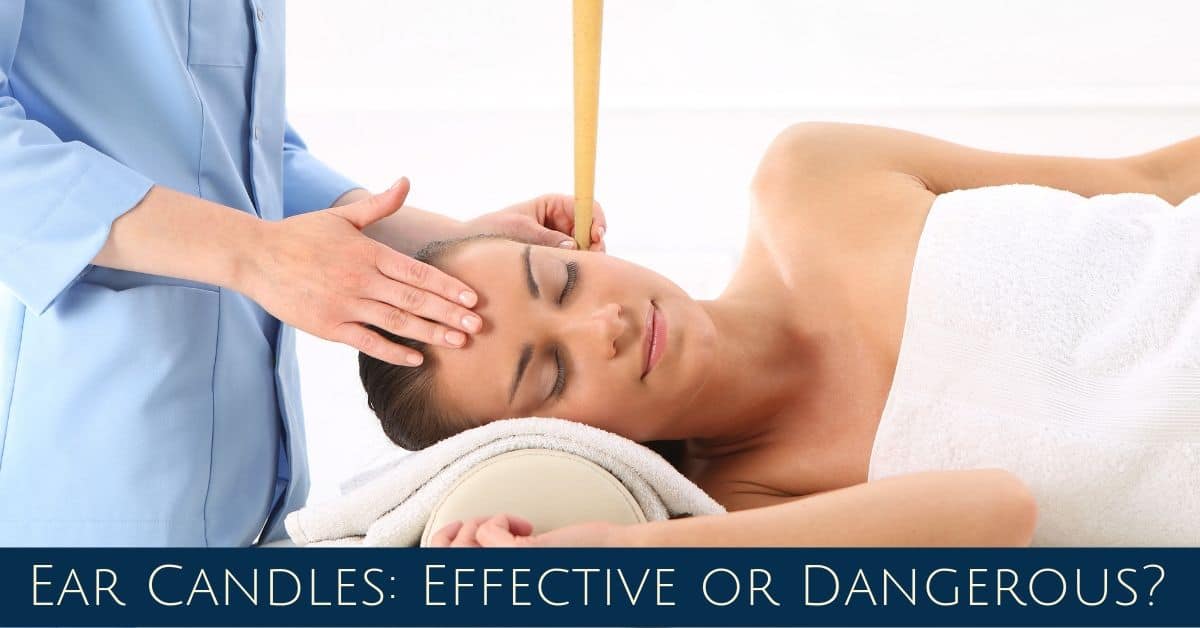Best known as an alternative approach for earwax removal often found at health food stores and centers of alternative healthcare , ear candles involve placing a hollow, wax-covered candle in the ear. Proponents of ear candling claim that it can treat a number of conditions, ranging from earwax buildup and even cancer. But do ear candles actually do what they are boasted to do effectively and safely?
What is ear candling?
According to proponents of the practice, cone-shaped candles specially-made for thermal-auricular therapy. They are used to remove build up of earwax in the inner ear. Ear candles are created from a fabric structure that is coated in one of three different kinds of wax. The pointed end is placed in the ear while the wider end is set alight. To perform ear candling, a person will lie on their side and insert a candle into the ear. Usually, a square or circle made of paper, tin foil, or plastic acts as a cover to prevent hot wax from dripping onto the face, neck, or hair. Once the candle and covering are secure, a person will light the candle for 10–20 minutes.
What are the proposed benefits?
Manufactures of ear candles propose several benefits to using ear candles though many audiologists have conflicting opinions on these claims. There are no scientifically proven benefits of ear candling. However, ear candle manufacturers still tout the many benefits of ear candling proven or not.
Some of the other proposed benefits of ear candling from include:
- removing wax, bacteria, and debris from the ear canal
- treating sinus infections
- improving hearing/ reversing hearing loss
- relieving sore throats
- colds and flu relief
- relieving headaches and migraines
- improving mental clarity
- purifying the blood
- improving lymphatic circulation
- clearing the eyes and improving vision
- reducing pain related to jaw aches
- reducing tension and stress
- reducing vertigo
The Benefits of Ear Wax
Your ears need earwax. The wax is used to lubricate the skin of the auditory canal, and to transport dust, dirt, dead skin cells and other material out of the ear. While often people are culturally disgusted by ear wax it serves very important roles in your hearing health. Though you might want to get excess earwax out of your ears, it’s important not to put anything into your ears for risk of injuring the fragile structures of your inner ear. Never put cotton buds or other objects into your ears. Such objects can clog up the ears and make matters worse rather than alleviate the problem. You even risk perforating your eardrums, resulting in bleeding and temporary hearing loss. If your ears need to be cleaned, you should wrap a damp cloth around your index finger and carefully wash your ears with circular movements. Never use anything else.
Is Ear Candling Safe?
According to the United States Food and Drug Administration (FDA), ear candling is not safe. They have been warning people to steer clear of the practice and related products since early 2010. Since wax is sticky, the negative pressure needed to pull wax from the canal would have to be so powerful that it would rupture the eardrum in the process. However, candling produces no vacuum. Researchers who measured the pressure during candling of ear models found that no negative pressure was created.
The concept that the ear canal is connected to structures beyond the eardrum is not even anatomically correct. The external ear canal, with an intact eardrum, is not connected to the brain, the sinuses targeted by the procedure or the Eustachian tubes (the passageways between the internal ear and the back of the throat). While some claim that the eardrum is porous and quickly allows impurities to pass through, this is untrue. The “impurities” that appear in the collected wax are nothing more than the ashes from the burnt wick and wax of the cone itself.
Lifestyle Hearing
If you feel like you have a buildup of earwax and trouble hearing because of it, make an appointment to visit us at Lifestyle Hearing. Our team can give your ears a proper diagnosis and help you get on the road to better hearing.

